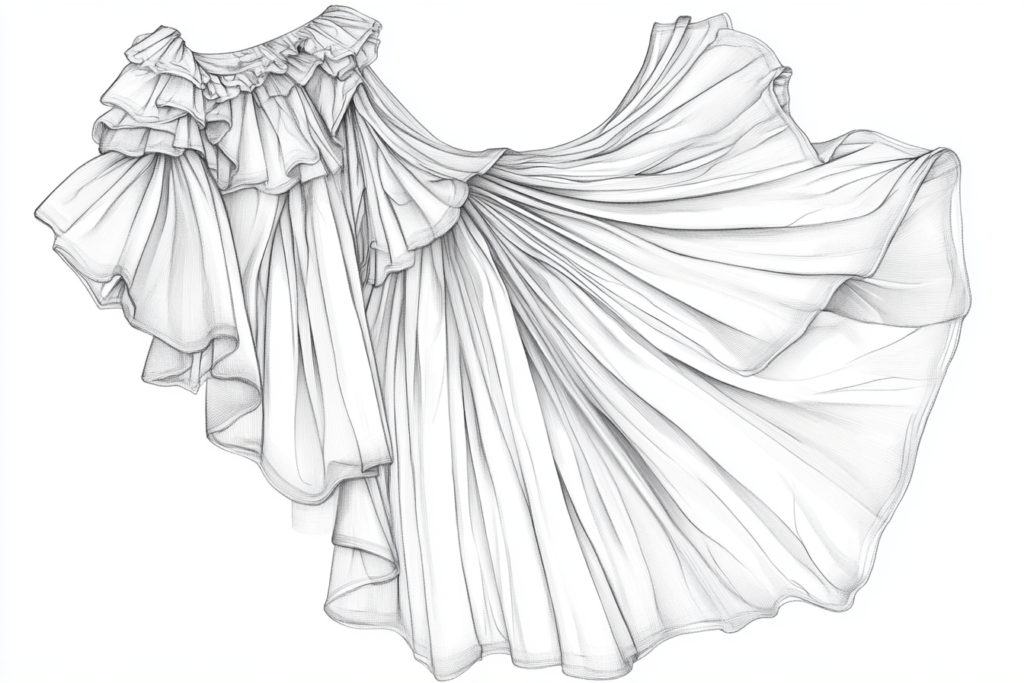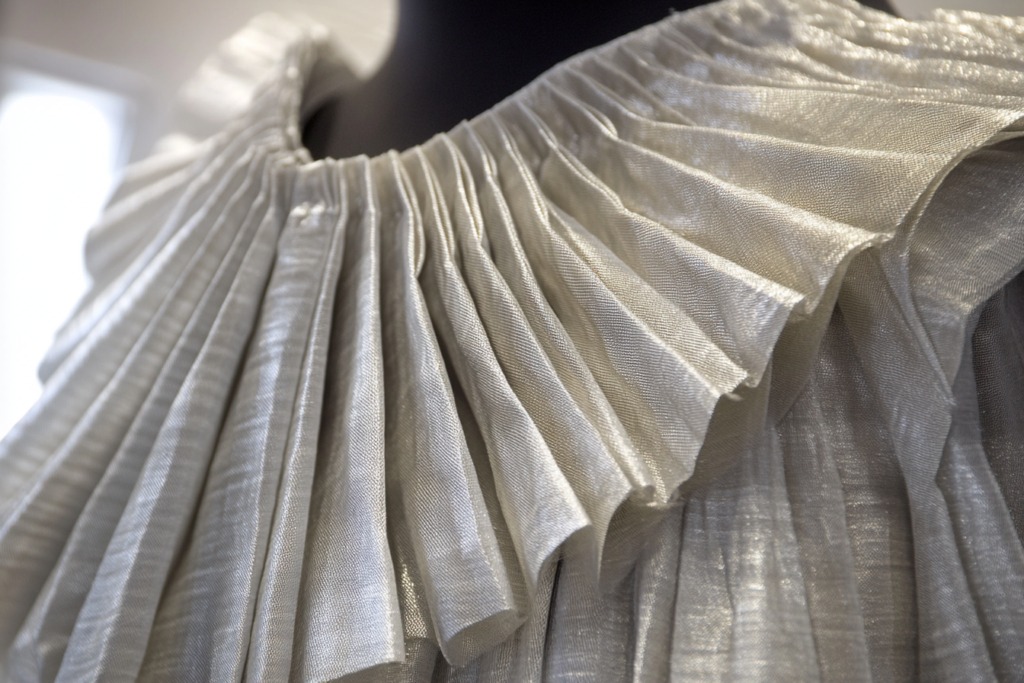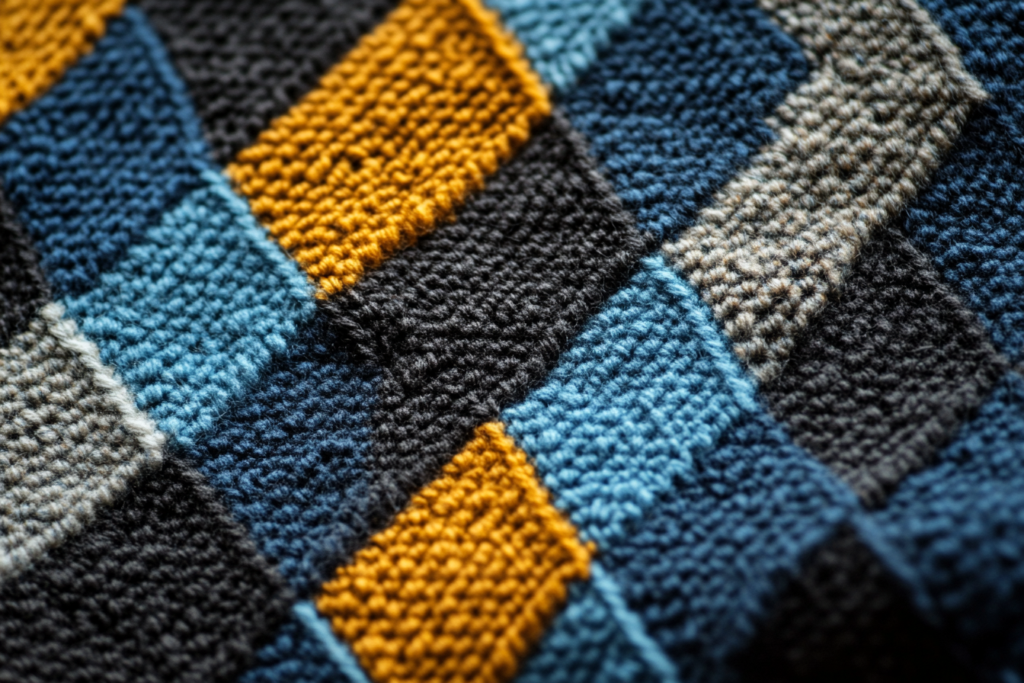Tuck Depth: Understanding the Measurement of Pleats in Garment Construction
Meta Description: Tuck depth refers to the amount of folding of pleats, measured on the surface of the finished garment. Learn how this measurement affects the look and fit of pleats in clothing.
What is Tuck Depth?
Tuck depth refers to the amount of folding in pleats, which is measured on the surface of the finished garment. It is an essential measurement when designing pleats, as it determines how much the fabric is gathered and folded to achieve the desired look and fit.
Tuck depth directly influences the visual appeal and structure of pleats, which are commonly used in skirts, dresses, and trousers. Whether the pleats are used for decorative purposes or for creating shape in the garment, the depth of the tuck plays a crucial role in the overall design.


Key Features of Tuck Depth
✔ Measurement of Pleats: Tuck depth is specifically the measurement of the fold in pleats from the surface of the garment.
✔ Determines Volume: The depth of the tuck directly affects the volume and fullness of the garment, especially in skirts and dresses.
✔ Varied Depths: The depth can vary, from shallow pleats that create subtle texture to deep pleats that dramatically affect the shape and volume of the garment.
✔ Influences Fit and Structure: Tuck depth plays a role in creating a tailored look or adding flow and movement to the garment.
✔ Adjustable for Design: Designers can adjust the tuck depth to fit specific design goals, whether they are aiming for classic pleating or bold pleats.
Why is Tuck Depth Important?
1. Aesthetic Impact
- The depth of the tuck affects the overall appearance of pleats in the finished garment. Shallow pleats offer a subtle texture, while deep pleats can create a more dramatic effect, altering the way the fabric flows and moves.
2. Shaping and Structure
- Tucks are used to shape a garment, often to fit it to the body. A deeper tuck creates more volume and shape, especially around the waist or hips, while a shallower tuck adds minimal volume and is better suited for a more streamlined look.
3. Fit and Comfort
- Tuck depth plays a role in the comfort of a garment. For example, in skirts or pants, the depth of the tuck allows the fabric to drape over the body comfortably while still offering structure.
4. Tailoring Versatility
- Tuck depth is essential for creating garments that need to be tailored or shaped. Designers often adjust the tuck depth based on the fabric’s weight, the garment’s intended fit, and the desired flow or structure.
How to Measure Tuck Depth
Measuring tuck depth requires an understanding of the garment’s finished size and the intended fold of the pleat. Here’s how to measure the tuck depth in a garment:
Step 1: Mark the Pleats
- Start by marking the pleats on the fabric according to your design. This is where the folds will occur.
Step 2: Determine Desired Depth
- Decide on the depth of the pleats. For shallow pleats, the tuck depth might be small (around 0.5 to 1 inch). For deep pleats, the depth could range from 2 inches to even 4 inches or more.
Step 3: Fold and Press
- Fold the fabric as planned and press it in place. Ensure that the folds are evenly spaced and aligned to create a uniform appearance.
Step 4: Measure the Finished Depth
- Once the pleats are sewn in place, measure the depth of the tuck from the surface of the garment to the folded edge. This will be the finished tuck depth.
Applications of Tuck Depth
Tuck depth is widely used in various garment types to create shape, texture, and style:
📌 Skirts and Dresses
- Tucks are commonly used in skirts and dresses to create fullness and movement. A deeper tuck will add more volume, while a shallow tuck creates a more streamlined and elegant look.
📌 Blouses and Shirts
- Shirtwaists and blouses may use pleats with varying depths to shape the waist or add texture to the bodice. The depth of the tuck can adjust the fit and flattering effect.
📌 Trousers and Pants
- Tucks can be used in the waist or legs of pants to create a more fitted look or add a touch of elegance to the design.
📌 Home Decor
- Tucks are also used in home textiles like curtains, upholstery, and tablecloths, adding a textured element to the fabric while also helping it drape beautifully.
Tuck Depth vs. Pleat Depth
While tucks and pleats are both techniques for gathering fabric, they differ slightly in terms of depth and purpose:
| Feature | Tuck Depth | Pleat Depth |
|---|---|---|
| Definition | Amount of fold in pleats measured on the surface of the garment | The depth of the pleat, creating a more structured fold |
| Purpose | Adds shape and structure in a subtle manner | Creates volume and movement in the garment |
| Use | For tailoring, fit, and texture | For flowing garments, adding fullness |
| Measurement | Measured on the finished garment surface | Measured at the fold of the pleat |
Illustration of Tuck Depth
Below is an illustration showing how tuck depth works on fabric, with the parallel folds and the measurement of the depth as the pleat is folded and stitched.

Conclusion: The Importance of Tuck Depth in Garment Construction
Tuck depth is a crucial element in garment design, helping to create shape, structure, and visual interest. Whether for functional or decorative purposes, the depth of the tuck determines the garment’s fit and movement. Understanding how to adjust tuck depth is essential for creating well-constructed garments that are both flattering and comfortable.



